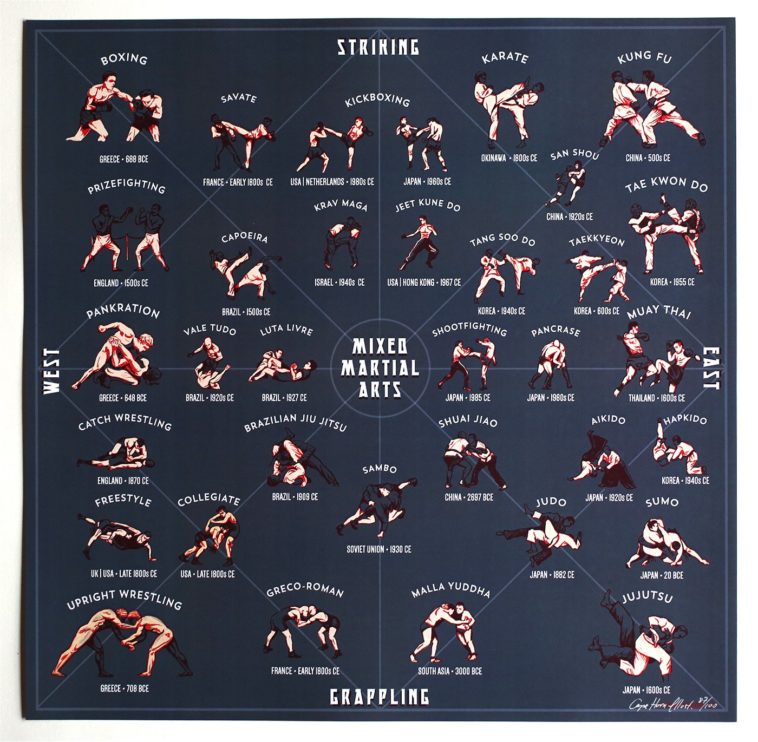Debunking The Different Fighting Style Styles: From Karate To Taekwondo
Debunking The Different Fighting Style Styles: From Karate To Taekwondo
Blog Article
Developed By-Becker Joseph
Are you tired of sensation bewildered by the large globe of fighting styles? With many styles to pick from, it can be easy to obtain lost in a sea of punches, kicks, and mysterious names. But concern not!
This conversation will certainly demystify the various martial arts styles, taking you on a trip from the powerful strikes of Karate to the dynamic kicks of Taekwondo. Prepare yourself to uncover the beginnings, strategies, and viewpoints behind these old art types.
So, tighten your belt and prepare to start an informing expedition right into the captivating globe of martial arts.
Beginnings of Martial Arts Styles
The beginnings of fighting styles designs can be traced back to old civilizations and their requirement for protection and combat techniques. Throughout background, different cultures established their own unique methods of fighting, each with its own collection of strategies and approaches.
In China, as an example, fighting styles designs such as Kung Fu and Tai Chi were established as a way of self-defense and improving physical and mental health.
In Japan, the samurai warriors developed styles like Martial arts and Judo, concentrating on self-control, accuracy, and mastery of the body.
In https://paxtonwgpxh.blogoscience.com/39465433/practical-and-powerful-self-defense-techniques-via-martial-arts-educating , in Korea, Taekwondo became a fighting style emphasizing high kicks, quick movements, and mental fortitude.
These early worlds laid the structure for the varied variety of fighting styles styles that exist today, each with its very own abundant background and cultural value.
Methods and Training Techniques
To understand martial arts styles, specialists need to find out numerous strategies and training approaches.
Strategies are the certain movements and activities used in combat, such as punches, kicks, throws, and obstructs. Various martial arts styles have their own distinct set of techniques that experts need to grasp via strenuous training.
Educating methods vary depending on the style, yet they usually include a combination of physical conditioning, drills, competing, and types.
Physical fitness is essential to construct stamina, adaptability, and endurance. Drills aid experts improve their techniques and improve their speed and precision.
Competing enables specialists to exercise their methods in a controlled, realistic atmosphere. Types, likewise called kata, are deliberate sequences of activities that aid specialists create muscular tissue memory and focus.
Viewpoints and Concepts
Discovering the viewpoints and principles of fighting styles styles can provide you with a deeper understanding of your chosen technique. Each martial art has its own one-of-a-kind ideology and set of directing concepts that shape the method it's exercised.
For example, Karate stresses self-control, respect, and self-discipline. It shows professionals to focus their minds and bodies, allowing them to defend themselves while preserving a feeling of inner tranquility.
On https://patch.com/illinois/palatine/calendar/event/20230123/e5f3c672-8358-43a3-bdef-ea940511b9fa/female-teen-adult-self-defense-seminar-four-part-course , Taekwondo puts a strong emphasis on speed, agility, and versatility. Its principles are rooted in the tenets of courtesy, integrity, willpower, self-constraint, and resolute spirit.
Verdict
Now that you've explored the origins, methods, and philosophies of various martial arts styles, you have a deeper understanding of these ancient self-controls.
Think of a young karate pupil, practicing with steadfast resolution and emphasis, breaking through boards with a powerful punch.
Their trip showcases the devotion and stamina required to grasp a martial art, reminding us that with discipline and perseverance, anything is possible.
